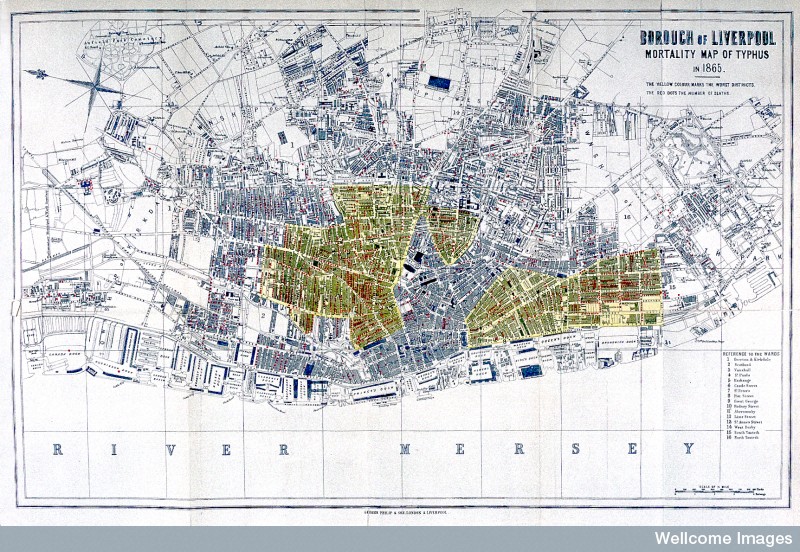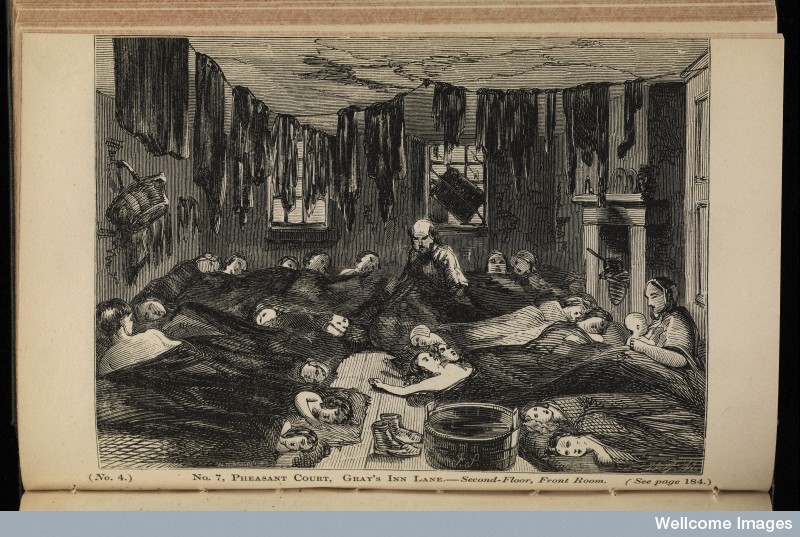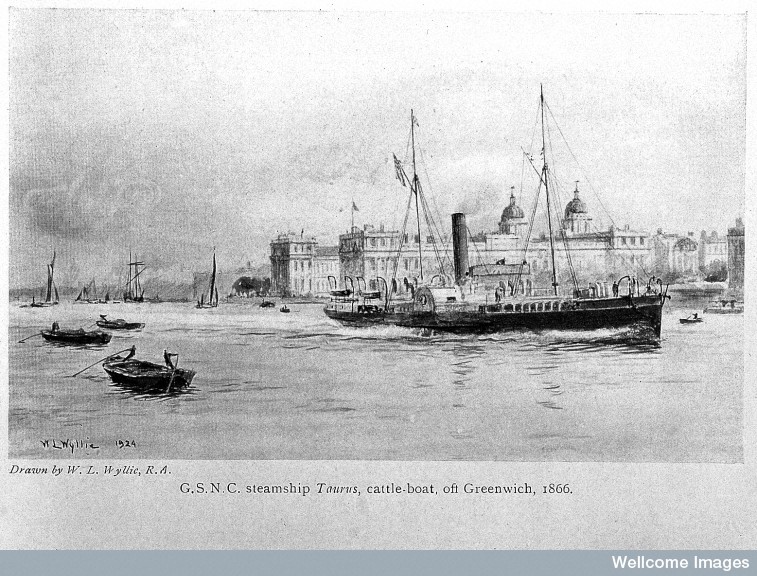The "hospital and cemetery of Ireland": The Irish and Disease in Nineteenth-Century Liverpool
Stephen Bance
From 1846 onwards, a growing anxiety permeated Britain concerning the threat being posed to the health of the public by the ‘unseen lethal baggage’ being brought from Ireland on immigrant steam ships. In the spring of 1847, Liverpool was hit by a typhus epidemic, while at the same time a large number of immigrants poured into the city fleeing the Great Famine (1846-52). As John Belchem outlines, the Irish were frequently depicted in Liverpool as being peculiarly susceptible to infectious disease, coming as they did from the ‘sterile heaths and mountainsides’ of the country to the squalor and destitution of the city, where it was considered that their predisposition to vice rendered them acutely vulnerable to contracting and spreading infection. William Henry Duncan, who was appointed Medical Officer of Health for Liverpool in the ‘calamitous’ year of ‘Black 47’, believed that the Irish were largely responsible for turning Liverpool into ‘a city of the Plague’. Irish migrants became so much associated with typhus that the disease became known as the ‘Irish fever’.
Mortality map of typhus in Liverpool in 1865, Wellcome Library, London

As the immigrant Irish flooded into Liverpool, the source and origin of infectious disease became a subject of contention in public health circles. By the mid-nineteenth century miasmatic theory, which cited rotting organic matter as the singular cause of infection, held sway among public health reformers. This view rejected claims that cold, dampness, overcrowding and predisposing factors contributed to the spread of disease. Thus, improving the living conditions of the Irish migrants, settled as they were in the worst slum dwellings in Liverpool, did not become a focus of official public health reform.
Nonetheless, the wider physical environment in which the Irish lived was responsible for incubating the diseases that spread throughout the city. Liverpool was distinctly vulnerable to typhus, owing to the combination of poor housing and the movement of large numbers through the port. For those Irish people who survived the crossing, Liverpool had little to offer other than overcrowded lodging houses and filthy cellars, many of which had been boarded up and condemned. In Bent Street, it was reported that ‘twenty six people were found huddled together in a room... and eight had died of fever in one house’. The endemic presence in British towns was exacerbated by the influx of destitute Irish, whose presence in the already overcrowded slums provided an easy environment in which the typhus carrying lice could spread. There was a desperate need for hospital beds and extra doctors and nurses so that victims could be removed to hospital and treated, thus stopping the spread of disease throughout the population. The authorities in Liverpool were faced with an unprecedented challenge.
Large numbers of Irish immigrants in cramped lodging houses and slums contributed to the spread of disease, Wellcome Library, London

Three large sheds were rented to house fever victims, with the intention of isolating the sick and slowing the spread of the epidemic. Warehouses near the docks were commandeered by the Select Vestry and filled to breaking point with fever victims, and four vessels were requisitioned as floating hospitals to receive typhus cases. At one point, 88 per cent of sick persons under the care of the Liverpool authorities were Irish. The conditions on the overcrowded steam ships that bought the migrant Irish to Liverpool, exacerbated the problem; passengers on deck were cold, often sick and ‘covered with the dirt and filth of each other’. Before departure from Ireland, the steam ship companies were required to inspect passengers for signs of fever and on arrival medical officers boarded searching for typhus victims. This had some effect in lessening the number of ill arriving on Liverpool’s quayside. In total, nearly 60,000 individuals contracted typhus in Liverpool during 1847. By 1848, typhus had almost played itself out. However, the epidemic fuelled long lasting resentments within the community due to the cost of relieving Irish paupers, and the threat, which they posed to public health.
Steamships carrying immigrants fleeing the Great Famine across the Irish Sea disembarked on the banks of the River Mersey in Liverpool, Wellcome Library, London

Belchem reveals that Irish immigrants were also implicated in the spread of infectious disease generally. According to W.H Duncan, the 1848-49 cholera epidemics were confined to the ‘destitute population in the lower districts’, which the Quarterly Journal of Science described as a ‘nursery of fever’ where thousands of poor Irish were ‘huddled together like sheep in a fold’. The Irish were equally held accountable for the three-pronged epidemic crises that struck Liverpool in 1865-66 when cattle plague, typhus and cholera drove the death rate up to over 57 per 1,000. ‘Wild Irish cattle’ and drovers were blamed for the prevalence of cattle plague while the Irish were cited as the foci of the typhus epidemic. Cholera again appeared in 1866, and the ‘rustic hygiene’ practices of the Irish were held accountable. The disease spread rapidly through Bispham Street where the ‘lowest of the Irish’ resided. One source traced the 1866 outbreak to the wake of a Mrs Boyle of Bispham St, at whose funeral the neighbours engaged in what were described as ‘incautious orgies’, the ‘dregs of ancient manners among the funeral customs of the Irish peasantry’. Irish workhouse inmates were also linked to an outbreak of smallpox in 1871-72. The Irish continued to be portrayed as disease carriers into the 1880s when squalid Liverpool vied with ‘outcast London’ as the focus of social concern. Both the environment which the pauper Irish inhabited and their cultural practices and behaviours were considered exciting factors in the spread of infectious disease. In the report of the Registrar-General of 1847, Liverpool in particular was depicted as having become the ‘hospital and cemetery of Ireland’.
Further Reading:
John Belchem, Irish, Catholic and Scouse: The History of the Liverpool-Irish, 1800-1939 (Liverpool University Press, 2007).
Catherine Cox, Hilary Marland and Sarah York, ‘Itineraries and Experiences of Insanity: Irish Migration and the Management of Mental Illness in Nineteenth-Century Lancashire’, in Catherine Cox and Hilary Marland (eds), Migration, Health and Ethnicity in the Modern World (Palgrave MacMillan, 2013), 36-60.
Frank Neal, Black'47: Britain and the Famine Irish (Macmillan, 1998).
